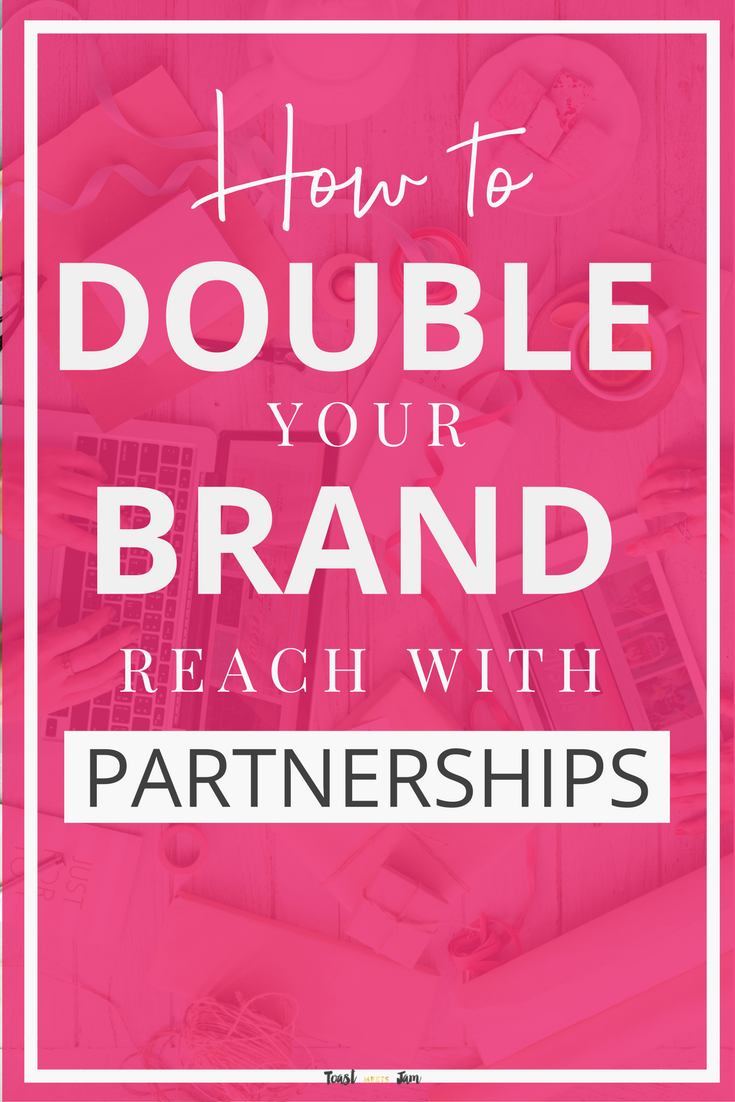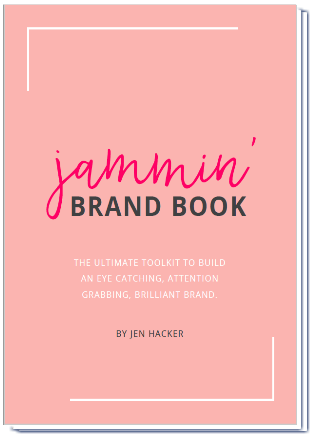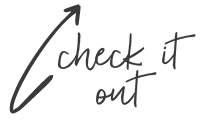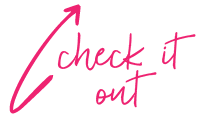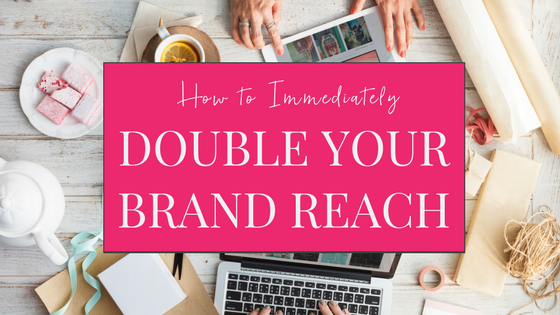
Okay, I’m going to let the cat out of the bag early. Because this secret is not so secret. The power behind this bold headline lies in brand partnerships.
There, I said it. You could be done with this post right here but I’d highly recommend that you stick around. In the rest of this post we’re going to talk about why your brand needs partners and more importantly, how to get them. But let’s not get ahead of ourselves. The first question to answer is..
What the heck is a brand partnership anyway?
Simply put, a brand partnership is anytime you join forces with another brand to support and promote one another. You see it happening all of the time but maybe haven’t stopped to notice. But think about these examples:
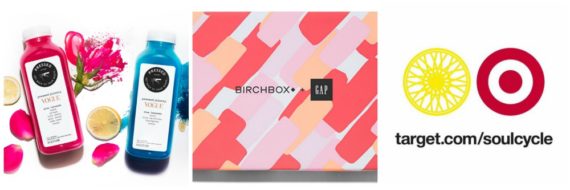
In each of these you see an example of how brands have partnered up to benefit one another. Take the Soulcycle x Target partnership for example. It doesn’t seem obvious at first but according to Soulcycle founders Julie Rice and Elizabeth Cutler,
“SoulCycle embodies the inspirational and active lifestyle that Target is celebrating as part of its focus on wellness. We’re thrilled to be working with [them] to bring SoulCycle to more people and help them find joy in movement.”
The partnership stems from a shared set of values and a belief that their two audiences will be interested in the others brand.
So why partner?
There are so many reasons. Let’s start with the big one…
Brand Partnerships will grow your brand’s reach
As the headline suggests, creating brand partnerships is a powerful way to increase your brand reach. Consider this, when it’s just you promoting your brand you’re only able to reach your community- that is your social media followers, email subscribers, and customers. When you partner with another brand, voila, you instantly double your reach – even more so if the brand is bigger than you.
But wait, there’s more! Brand partnerships can also:
- Boost credibility: Buddying up with another brand can positively impact how people perceive your brand. That brand has already done the work to build trust with their community. Those positive feel good vibes rub off on you by association.
- Create new business: When you partner with another brand you not only gain access to their community but also their team and talent. This opens up opportunities for you to create a new product, service, or event that can only be achieved by working together.
- Generate press: In some instances, brand partnerships can even lead to your brand gaining attention from bloggers, influencers, and journalist. An unexpected partnership, one with a bigger brand, or the creation of something new and interesting can all create opportune conditions to capture media attention.
Sounds amazing right??
So how do we do it? And really, how do we do it when we feel like we’re just a little brand that no one would want to partner with?
It starts with trust.
When you haven’t worked with partners before it’s true that they may approach you with a healthy bit of skepticism. Your job is to alleviate their concerns, show them you can really add value to their business, and reciprocate all of things you hope to gain. Here’s how we’re going to do it:
5 steps for nailing awesome brand partnerships
1. Make sure your branding looks awesome
Let’s say that you find a brand that you admire and would love to work with. You check out their website, look for an email address, and shoot them over your proposal. The person on the other ends receives your email but isn’t familiar with your brand. She’s curious to learn more about you so she heads to Google to see what she can find. Sound like a reasonable assumption?
Now what happens when they type your brand into the search bar? Hopefully your website and your social media channels pop up as the top results. This is your big moment! This is your chance to make a first impression and to show them you’re meant to be taken seriously.
We make a subconscious judgement about something within 90 seconds of seeing it.
That means your branding needs to dazzle – strong logo, consistent use colors and fonts, and visuals that bring out your brand personality. Strut your stuff and put your best foot forward. For more on that, check out this post.
2. Start small and build credibility
The bigger the brands we can partner with the better. Larger brands can give you access to larger audiences and resources. They also carry more press potential. All of those great benefits we talked about earlier. But getting their attention can be hard. Bigger brands are also much more likely to be flooded by partnership requests than smaller ones. They can only afford to spend their time and put their brand on the line for the brands that are the best fit.
Does that mean as smaller brands we don’t stand a chance? Absolutely not. It means that we have to be more strategic in our approach.
Before gunning for the big guys, start small. Reach out to brands that are local or that you have a personal connection to. See what you can do to help them. When you’re pitching any kind of partnership it’s smart to always lead with what you can do for the other person. Make it about boosting their brand, not yours.
The goal here is to score some quick wins that build your portfolio and credibility. You want to be able to show other bigger partners that you want to work with, how you’ve successfully partnered with others in the past. Each time you land a brand partnership, you can use it as an opportunity to level up for the next round.
3. Keep track of your analytics
One of the most important things potential partners will want to see are your results. It’s one thing to say you’re a good partner. It’s another to actually be able to show them with hard facts and figures that you’re a good partner. This becomes more and more true as you start to approach larger brands.
With this in mind, it’s important that every time you work with a partner, you establish goals for the partnership from the start. You want to know what you’re going to track, measure and report on in order to show your success.
For example, this could be the number of attendees at an event you host, engagement with a social post, or product sales attributable to a blog you published. The goals and success metrics will vary depending on the nature of your partnership.
When you start to work with bigger brands they will want to know why investing in you is a smart choice. Being able to share numbers like these from your previous partnerships will help you win them over.
4. Amass fan love
Quant-y figures of course only share half the story. On the other hand, you want to be able to show off what people are saying about you. Remember how we talked about credibility as one of the benefits of a partnership? Well your partner is going to want to be sure that working with you will be positive for them. Being able to show that you’ve built a strong, loyal community of customers who support your brand can go a long way.
There are several ways to obtain this soft data. For starters ask for feedback when you’ve completed a campaign with a partner. Testimonials can be an amazing proofpoint. From there is a good idea to screen shot fan tweets, Instagrams, or other social media love that you get. If you receive any supportive emails keep those as well.
One thing I like to do is create a folder for “fan love”. This can be a tag in your inbox, a notebook in Evernote, or a simple folder on your Google Drive or computer. The idea is to have a place to keep all of your data and clippings so that you have examples on hand to show the kinds of relationships and results you’re able to deliver.
5. Show off your success
Last but certainly not least, when you start to gather feedback on your partnership campaigns show it off. It will help to increase your credibility and give potential partners even more reason to want to work with you.
Start with your website. Wherever it makes sense add testimonials. These can be from partners or customers but should give clear examples of what you were able to do for them. The more specific and positive the better. Next, add a “Press” page to your site. Add in any media mentions you’ve earned and if possible, link out to the original source.
Besides your website, your social media can also be a great place to show off your best work. Awards and accolades are both great examples of quick, credibility driving mentions you can include in a short bio.
Finally, no matter what size your brand is, its advisable to have a media kit. This is a place where you’re able to tell potential partners all about your brand- your mission, who your customers are, and why you’re a great partner.
To wrap it up
I’ve worked across many brands in my career and I can tell you from my experience that brand partnerships are a big deal. They’re like a shortcut to getting where you’re aiming to go. You want to reach twice as many people? Do twice as many things? Find yourself a partner.
Ready to get to it? Download this cheatsheet with my 21 ideas for your next brand partnership.
What questions do you have about getting brand partnerships? Drop a comment below to let me know!
A toast to you,
Jen


